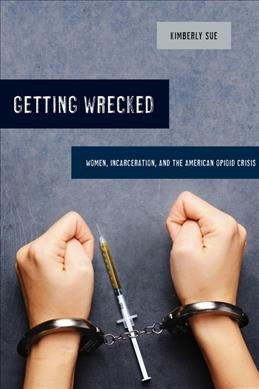Dr. Kimberly Sue is an anthropologist with a Harvard education and a physician at Riker’s Island, New York City’s main jail complex. She also works as the medical director of the Harm Reduction Coalition, advocating to change US policies and attitudes about treating drug users. With her book, Getting Wrecked: Women, Incarceration, and the American Opioid Crisis, Sue tells the firsthand accounts of women she has treated and their struggles of recovering from opium addiction as they cycle from jail, prison, and community treatment programs.
During an interview with NPR, she states that “Incarceration is not an effective social policy… It’s not effective in deterring crime. But we continue to rely on it for reasons that have to do with morality.” Does locking people away in prisons have a positive impact? Is it better to imprison them before they even commit a crime just to be ‘safer’? If anything, it’s harmful to their mental health and doesn’t help them overcome their addiction. In particular, solitary confinement can have serious consequences – demonstrated with the tragic suicide of Kalief Browder, who died three years after being in solitary confinement at Rikers.
Dr. Sue mentions that in most of the county-level jails in this country, people are forced to withdraw off medications against their will. Methadone is a treatment for opioid use disorder that one cannot access in jails in many places in this country. These people may be helpless to control whether they receive treatment or not. What really goes on with recovering from substance abuse may be something that the general public may not be aware of. Dr. Sue took care of a woman in the health services unit at MCI-Framingham, a women’s state prison in Massachusetts. The woman heard another prisoner screaming in agony from methadone withdrawal. Sue’s patient heard the other prisoner stop screaming, and only after they were able to get the guard’s attention, it was discovered that the prisoner hanged herself.
Sue also brings up the stigma around drug use, stating that “the idea that substance use is a disease of the will is very heavily entrenched in American ideology. We have a hatred of people who are dependent on anything — including the government — for support. The idea of people being on welfare, the idea of people not working.” From a historical standpoint, it is true that ideas of independence and gaining success on one’s own terms is valued by the American people. This may explain the stigma that some hold against people that are addicted to drugs. Still, addiction is a physical dependence that doesn’t dictate that someone is a bad person.
Finally, Sue describes how women specifically have to deal with this stigma. She describes, “Some of the women in my book were low-level drug dealers. And they didn’t have anything to give prosecutors, so they would get thrown under the bus by the men who were much higher up who had more information. So they would take the rap.” Sue also provides an interesting statistic – while the rate of incarceration of women is still relatively small compared to that of men, it has also gone up 840% over the past 40 years.
An important example to consider is the decriminalization of drug use in Portugal. After Portugal decriminalized drug use, overdose deaths decreased by 80% and HIV rates went from 52% to 6%. It may not be a perfect, universal solution, but it is an example of how public health care can be positively changed. If more people are made aware of these issues and the stories of women dealing with life-threatening addiction and incarceration, perhaps society can begin to work past the stigma against drug use and steps can be taken to reform the system.

